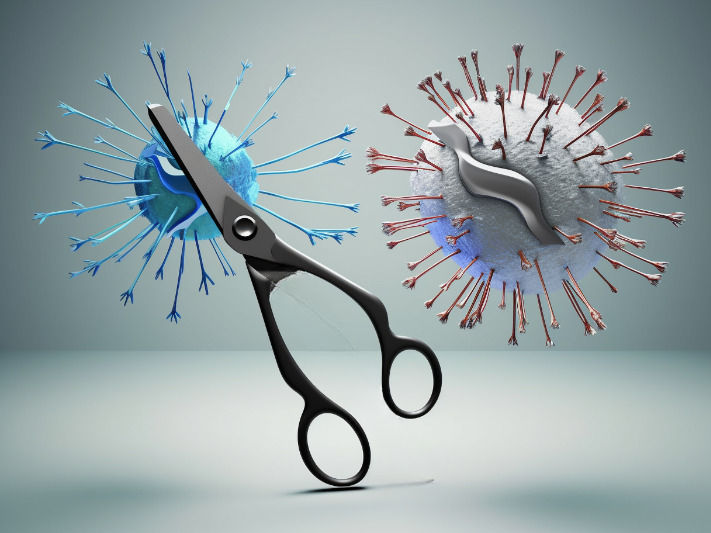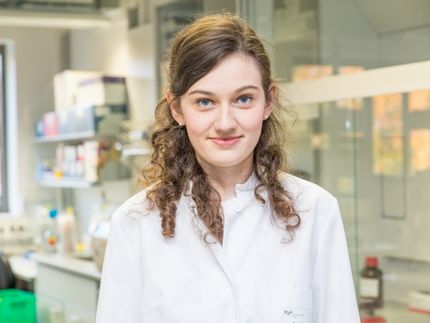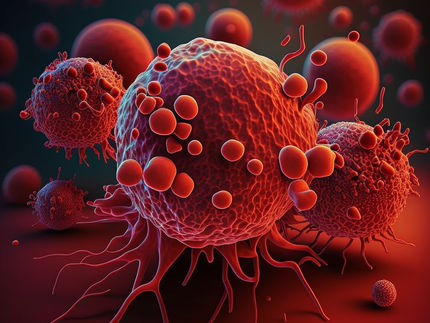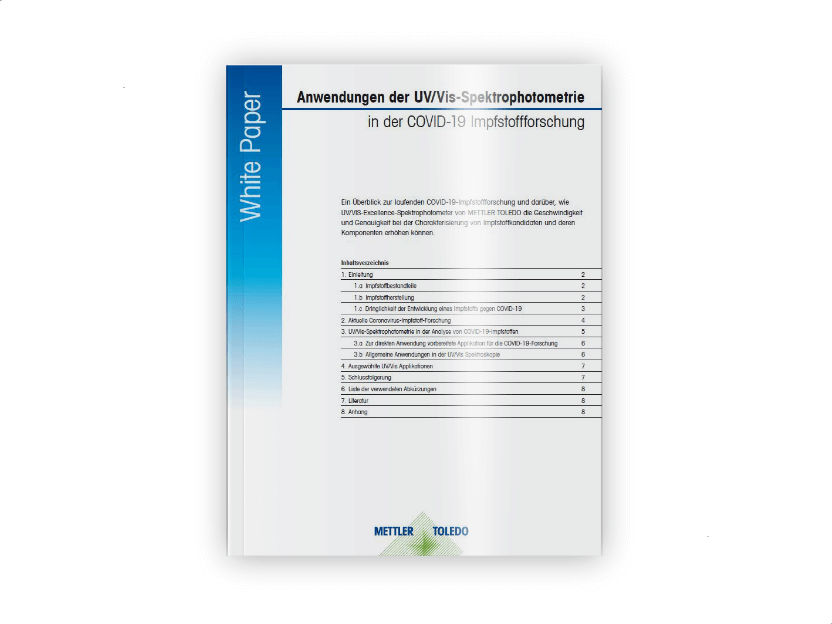Gene scissors used successfully in the laboratory against HIV-related virus
Research group and start-up reach milestone in fight against a virus that triggers a form of leukemia
HTLV-1 triggers aggressive forms of leukemia or an incurable spinal cord disease that leads to paralysis: the virus is the often ignored but no less insidious sibling of the HIV virus that causes AIDS and also belongs to the family of retroviruses. A group of researchers from TU Dresden, the company PROVIREX Genome Editing Therapies and FAU have now provided initial proof of concept for a potential therapeutic approach. They have published their findings in the journal Molecular Therapy.

Symbolic image
Computer-generated image
Approximately 10 to 20 million people worldwide are infected with the HTLV-1 virus and more than 90 percent of infections are passed on through sexual contact or breast milk. The virus is particularly common in Japan, central Australia, South America, and parts of Africa and the Middle East.
To contain the virus, infected mothers in Japan, for example, are advised to reduce breastfeeding or not breastfeed at all but such an approach would increase the risk of other sometimes life-threatening diseases to babies who are not breastfed in poorer regions.
Like HIV, the virus belongs to the retroviruses and, moreover, to the cancer-causing oncoviruses. After transmission, it secretly incorporates itself into the cell DNA in the infected person. There it lies dormant for decades, usually unnoticed, until it leads to severe disease in up to 10 percent of carriers: Adult T-cell leukemia/lymphoma, HTVL-1-associated myelopathy and other inflammatory diseases are all caused by HTVL-1.
The research group has now found a way to get to grips with the HTLV-1 virus: With the help of special gene scissors, which – unlike the well-known CRISPR-Cas9 method – are based on an enzyme called recombinase, they have succeeded in cutting the virus out of the DNA of the infected cell in the laboratory. In cells where the virus had not yet fully integrated, designer recombinase (RecHTLV) was able to massively impede infection.
What has been successful in the laboratory now requires more extensive further research before a therapeutic approach can be developed. But at least this success is an important step on the way to containing the virus.
“We are confident that the gene scissors created in the lab can be further developed as our research progresses. We have already achieved continuous improvements with designer recombinases with regard to the HI virus – now we need to further adapt RecHTLV for the HTLV-1 virus, which also belongs to the retroviruses and therefore behaves in a very similar way,” explains Prof. Dr. Frank Buchholz from TU Dresden, who developed this form of gene scissors.
Even if a research team does not immediately succeed in achieving a complete cure, significant successes can be made: “From my point of view, it’s important to find a way to lower the viral load in patients. Even if we only succeeded in doing this, it would significantly reduce the risk for patients of being among the 10 percent affected who actually develop one of the severe diseases,” explains PD Dr. Andrea Thoma-Kreß, who is involved in the current research project at the Institute of Clinical and Molecular Virology at FAU. “The risk for transmission through breast milk would also decrease with lowered viral load.”
The psychological aspect should not be neglected either: “Even the knowledge of being infected leads to severe psychological stress,” says PD Dr. Andrea Thoma-Kreß. “After all, patients live their whole lives under the threat of a possible outbreak of a disease.” Knowledge of a potential therapy could work wonders here.
The enzyme RecHTLV can already be produced under laboratory conditions. It is introduced into the infected cells using vectors. There, it targets two very specific, identical DNA sequences of the virus that are found at the junction between the virus and human DNA. The recombinase cuts at these sequences, thereby reversing the integration. The more cells that can be treated with this process, the better the chances are.
“We see the current experiments as a successful and promising proof of concept,” Thoma-Kreß elaborates. “We are aware that there is still a lot of work to be done here, especially because the environment of virus integration and the like have to be taken into account. But these early successes motivate us to keep going until we get HTLV-1 under control.”
Original publication
Other news from the department science
Most read news
More news from our other portals
Something is happening in the life science industry ...
This is what true pioneering spirit looks like: Plenty of innovative start-ups are bringing fresh ideas, lifeblood and entrepreneurial spirit to change tomorrow's world for the better. Immerse yourself in the world of these young companies and take the opportunity to get in touch with the founders.





















































